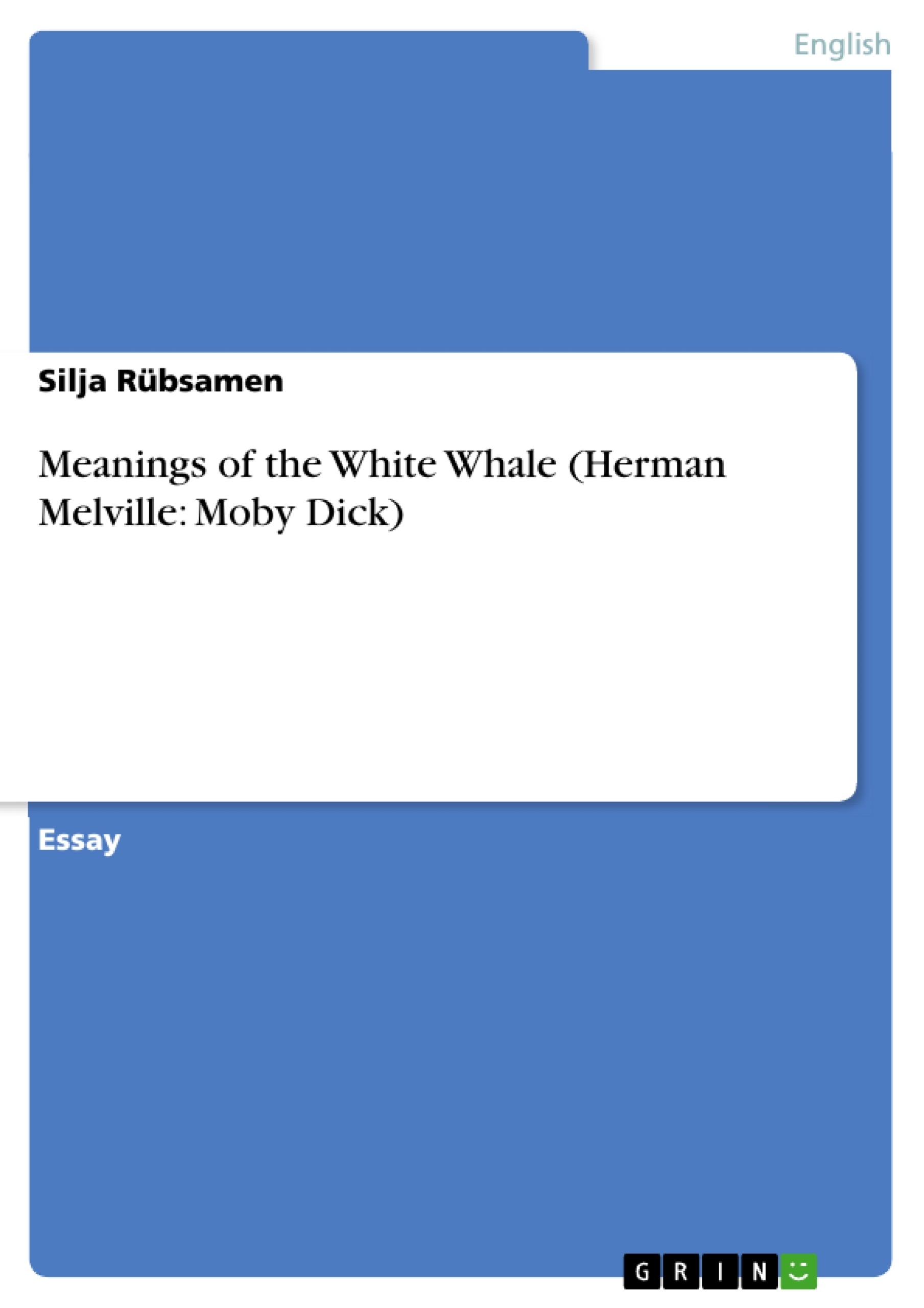Throughout the whole novel Melville undertook great pains to provide a vast network of associations in order to amplify the image of the whale for the reader. A glance at Melville’s sources proves that he had amassed a collection of general and mythological accounts of the whale even before he began to write Moby-Dick. Becoming ever more aware of the multiplicity of possible interpretations of the whale, Melville admitted in Chapter 104 that the main theme of the book is a “mighty theme,” brought to perfection in
a “mighty book” (p. 349). Every description of a different concept of the White Whale from any culture brings with it a vast body of pictures and notions, each able to incite a reaction of associations within the reader; the result being necessarily a wide range of different meanings – almost one meaning for every reader. Cloaked in different accounts of the White Whale comes an amplification process. The reader is confronted with concepts
of the Whale and his whiteness, each accompanied with a series of possible associations that finally give the White Whale its immeasurable plurality of meaning. That Melville’s narrator had undoubtedly more than one meaning in mind for the whale tells Ch. 1: And still deeper the meaning of that story of Narcissus, who because he could not grasp the tormenting, mild image he saw in the fountain, plunged into it and drowned. But that same image we ourselves see in all rivers and oceans. (p. 20) The notion that everybody sees something different in a mirror elucidates the amplification process the narrator has in store for the reader. Just as a mirror, the novel serves as an instrument of self-assessment: the reader looks into the book, and combines personal background with the “raw material” of concepts that enable him to develop his associations that finally form his image of the whale. [...]
Table of Contents
- Meanings of the White Whale
- The Sailors
- The Harpooneers, Pip
- Starbuck
Objectives and Key Themes
The author examines the complex and multifaceted symbolism of the White Whale in Herman Melville's Moby-Dick. The analysis explores how Melville utilizes the whale as a central motif, woven into a tapestry of interconnected meanings and interpretations. The author analyzes the perspectives of various characters, from sailors to the obsessive Captain Ahab, and investigates how their views on the whale shape their understanding of the hunt and its consequences.
- The Multiplicity of Meanings: Examining how Melville crafts a vast network of associations around the White Whale, allowing for multiple interpretations and personal connections to the text.
- The Role of the Narrator: Analyzing how the narrator manipulates the reader's perception of the whale by providing a collection of ideas that can be amplified through personal associations.
- The Whale as Symbol: Exploring the various symbolic interpretations of the whale, including its representation as a deity, an agent of chaos, and a manifestation of the natural world.
- The Hunt as Transgression: Investigating how the hunt for Moby Dick is portrayed as a violation of boundaries, both spiritual and ethical, leading to consequences for both the hunters and the hunted.
- The Significance of Whiteness: Analyzing the importance of the whale's whiteness in relation to religious and cultural symbolism, drawing connections to various traditions.
Chapter Summaries
The introductory chapter explores the narrator's deliberate use of symbolism in the novel, highlighting how the White Whale acts as a mirror reflecting diverse perspectives and interpretations. The chapter then shifts to the perspective of the sailors, showcasing their generally superstitious and fearful view of the whale as a dangerous creature.
Further, the chapter delves into the unique perspectives of the harpooneers and Pip, who have witnessed the White Whale firsthand. Their understanding of the whale intertwines fear and awe, recognizing its immense power and potential divinity. The chapter also draws parallels between their perspective and those of primitive hunting societies.
Finally, the chapter examines the views of Starbuck, a devout Quaker who sees the whale as a mere animal and condemns Ahab's obsessive quest for revenge. Starbuck's perspective underscores the clash between Ahab's hubris and the traditional view of the whale as a valuable resource.
Keywords
Key themes and concepts explored in the text include the White Whale as a symbol, the multiplicity of meanings, the hunt as transgression, the role of the narrator, the importance of whiteness, and the perspectives of various characters, such as the sailors, harpooneers, and Starbuck.
- Quote paper
- Silja Rübsamen (Author), 2002, Meanings of the White Whale (Herman Melville: Moby Dick), Munich, GRIN Verlag, https://www.grin.com/document/55910



